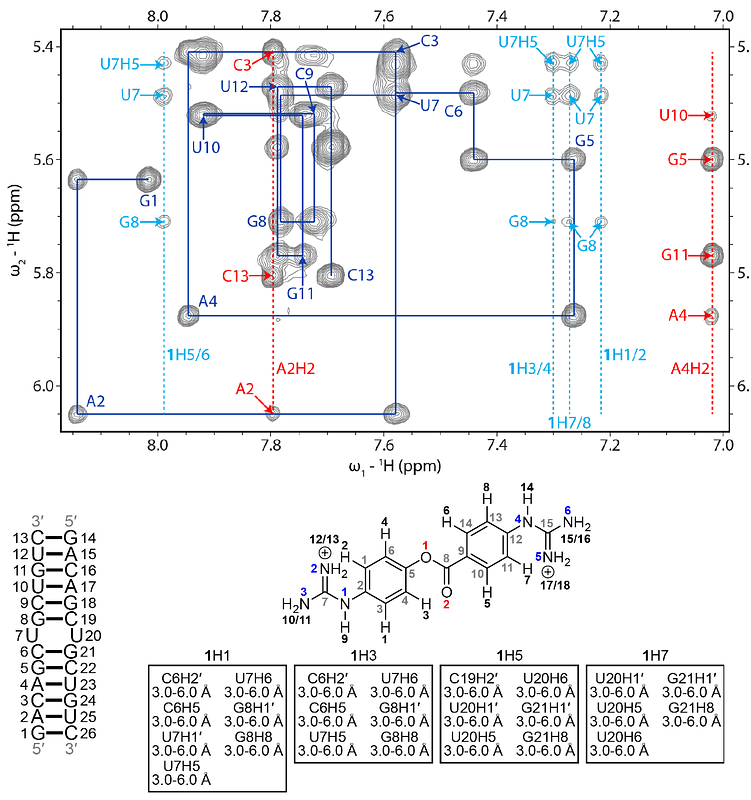NMR structures of small molecules bound to a model of an RNA CUG repeat expansion

NMR structures of small molecules bound to a model of an RNA CUG repeat expansion
Chen, J. L.; Taghavi, A.; Frank, A. J.; Fountain, M. A.; Choudhary, S.; Roy, S.; Childs-Disney, J. L.; Disney, M. D.
AbstractTrinucleotide repeat expansions fold into long, stable hairpins and cause a variety of incurable RNA gain-of-function diseases such as Huntington\'s disease, the myotonic dystrophies, and spinocerebellar ataxias. One approach for treating these diseases is to bind small molecules to the structured RNAs. Both Huntington\'s disease-like 2 (HDL2) and myotonic dystrophy type 1 (DM1) are caused by a r(CUG) repeat expansion, or r(CUG)exp. The RNA folds into a hairpin structure with a periodic array of 1x1 nucleotide UU loops (5\'CUG/3\'GUC; where the underlined nucleotides indicate the Us in the internal loop) that sequester various RNA-binding proteins (RBP) and hence the source of its gain-of-function. Here, we report NMR-refined structures of single 5\'CUG/3\'GUC motifs in complex with three different small molecules, a di-guandinobenzoate (1), a derivative of 1 where the guanidino groups have been exchanged for imidazole (2), and a quinoline with improved drug-like properties (3). These structures were determined using nuclear magnetic resonance (NMR) spectroscopy and simulated annealing with restrained molecular dynamics (MD). Compounds 1, 2, and 3 formed stacking and hydrogen bonding interactions with the 5\'CUG/3\'GUC motif. Compound 3 also formed van der Waals interactions with the internal loop. The global structure of each RNA-small molecule complexes retains an A-form conformation, while the internal loops are still dynamic but to a lesser extent compared to the unbound form. These results aid our understanding of ligand-RNA interactions and enable structure-based design of small molecules with improved binding affinity for and biological activity against r(CUG)exp. As the first ever reported structures of RNA r(CUG) repeats bound to ligands, these structures can enable virtual screening campaigns combined with machine learning assisted de novo design.


